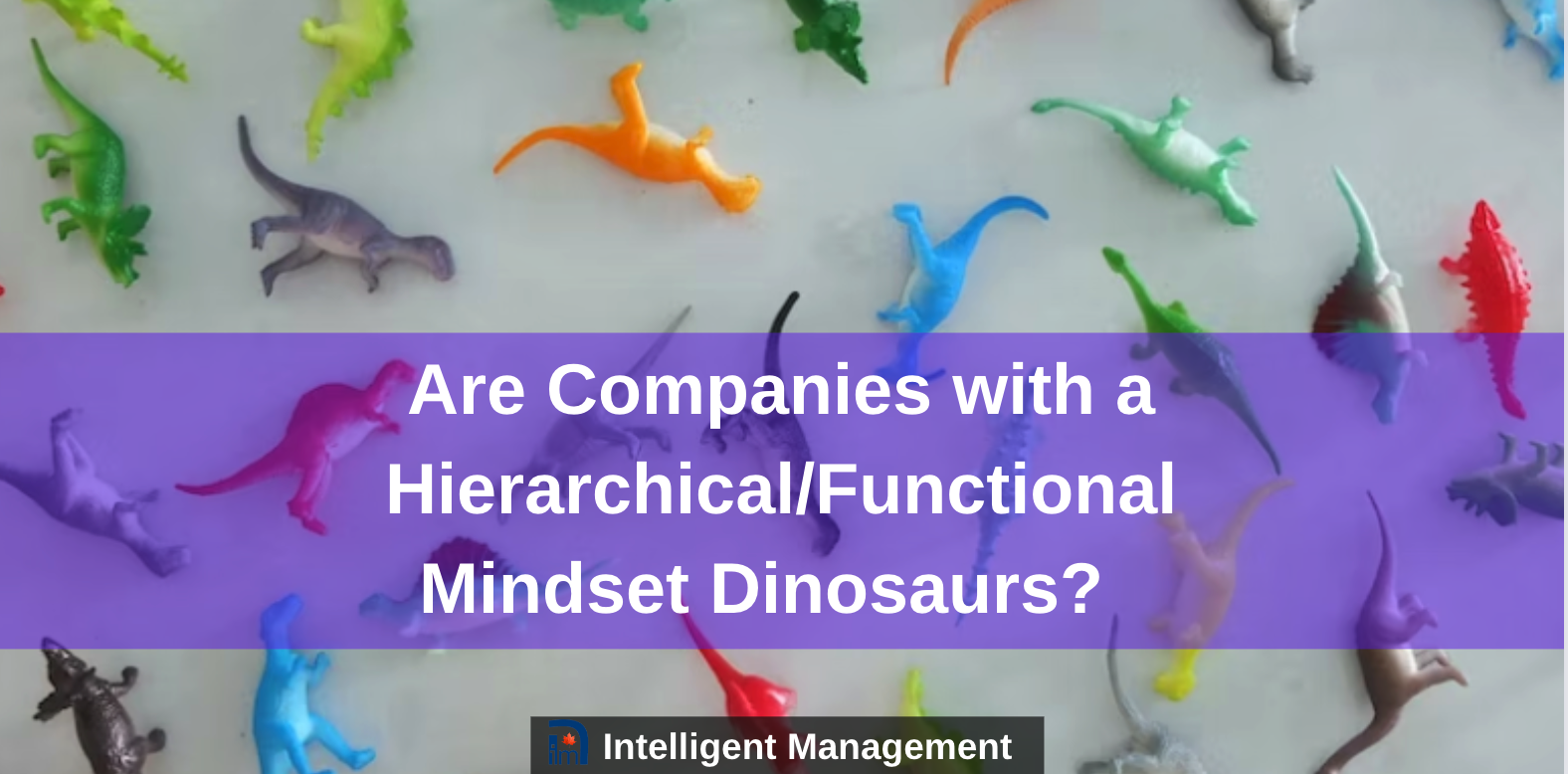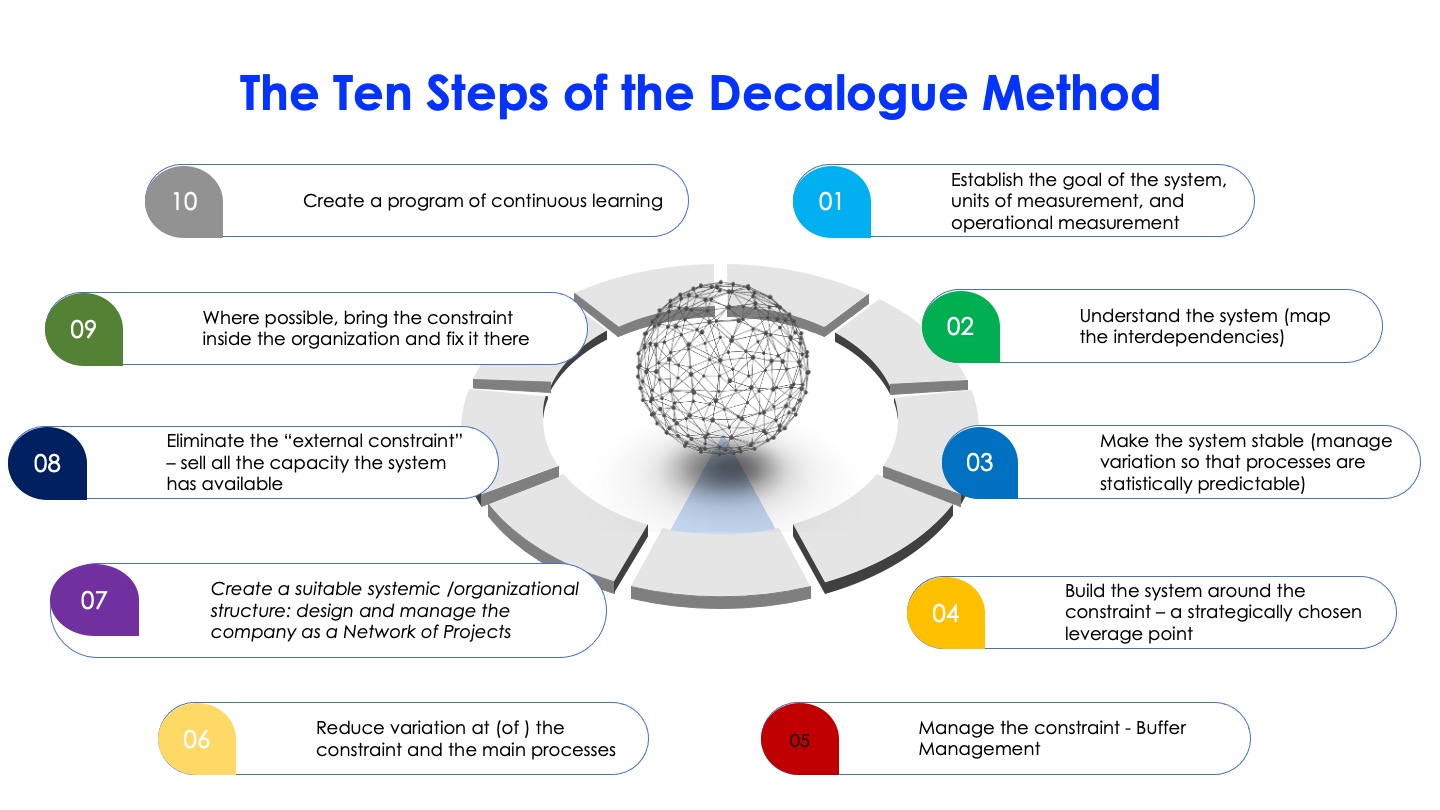
If you are a company that has a Hierarchical/Functional mindset, are you a dinosaur? We would say yes and time is running out for such companies in today’s complex scenario. It is also an enormous opportunity for all those companies who decide to abandon flawed thinking and adopt an evolved approach.
In today’s post, Dr. Domenico Lepore looks at leading and managing a different kind of organization and the change process it entails. (This completes the section of this series on Step 7 of the Decalogue: ‘Create a suitable systemic/organizational structure: design and manage the company as a Network of Projects).
What can companies use to replace the outdated Hierarchical/Functional structure and way of thinking? A much more organic design, based on managing variation and constraints and that reflects the intrinsically project-like nature of the work of any organization. However, this is not a cosmetic change, it is transformational. It is rooted in a paradigm of cooperation, togetherness, and win–win. The new covenant that everyone in the organization—as well as the value chain in which the organization is embedded—must embrace requires a much higher ability to think, communicate, and act; it requires a new “wiring” in the way we measure, manage, and sustainably improve our efforts toward our goals.
Challenging assumptions about how we lead and manage

The real challenge in bringing about a transformation based on a Network of Projects lies in the subliminal, unchallenged mental models that make us believe that an organization requires a superimposed control mechanism, be it a boss, a function, or an accounting structure based on cost accounting type considerations. An emotional and cognitive shift needs to occur in the way people learn and use their knowledge as well as how they see themselves develop and interact in the workplace. The Thinking Processes from the Theory of Constraints were developed by Dr. Goldratt to aid that shift. Far from being a mere technique, we have found them to be a critical element in transforming organizations into “thinking systems” because they foster in people the ability to see interdependencies, resolve conflicts, be empowered, work cooperatively, communicate effectively, and, at a higher level, perceive (and act consistently with) the oneness of the organization with its business and physical environment.
It’s a change process

The Thinking Processes were developed to sustain, focus and facilitate the change process underpinned by the process of ongoing improvement at the heart of the Theory of Constraints. Goldratt identified three major phases of change:
- What to change
- What to change to
- How to make the change happen
Goldratt created the Thinking Processes because he realized how important it was to provide a strong cognitive support to combat the difficulties associated with change that people inevitably experience. Used together, the Thinking Processes prove themselves time and again to be an effective way to supervise and guide the change process. They are also an ideal companion for developing project plans.
The good functioning of an organization where conventional hierarchy has been challenged relies on enabling higher forms of systemic thinking that are stifled by both current educational systems organized into silos and the corporate world. It is not enough simply to change processes. Flat organizations could easily turn into a short-lived gimmick unless we systemically challenge working and, ultimately, existential paradigms governing the image that we have of what it means to live and work together. This requires a considerable cognitive effort and, without the right cognitive supports to sustain that effort, there can be little guarantee of continued success.
The new focus of leadership for complexity

It may seem paradoxical to many, but a legitimate solution for managing complexity creates a radically simpler job for leadership in terms of focus. Instead of trying to focus on all the various parts as separate pieces, their efforts can be concentrated on the constraint and on the project buffers that indicate exactly how projects are progressing. Less simple is the change in mindset and the leadership skills required to manage an organization as a network in a complex world. The basics for this new style of leadership (none of which are currently taught in business schools) would be:
- a systemic understanding of organizations and the interdependencies they are part of (complexity)
- ability to base decisions on understanding variation
- ability to bases decisions on systemic, throughput-based measurements
- ability to give clear instructions
- ability to empower staff operationally by aligning responsibility with authority
- Ability to manage conflicts systemically
- Ability to frame situations systemically to develop breakthrough solutions
Achieving So Much More

Network theory teaches us that the interaction of hubs and nodes gives birth to emergent properties, i.e., structures or behaviors that emerge spontaneously from interaction. The years of implementations have shown us that we can consider the Decalogue as an emergent property— something that goes far beyond the simple combining of two separate elements. It is a unique methodology that lays the foundations for continuous improvement and sustainable growth and points at a new organizational model. This organizational model evolves the systemic combination of Deming and Goldratt into the design of the Network of Projects—a vision and a method that can make the systemic organization truly operational. To build this reality requires a higher form of intelligence and ethical awareness. We can achieve this with the ecology of the mind that systemic thinking provides and by embracing the values of a worldview where profit and the common good are inextricably interdependent. The aftermath of COVID-19 does not have to be only a tragic one. It provides an opportunity for a genuine reset of how we interact, as individuals, corporations and value chains, for the better. Let’s not settle for half-baked “solutions” from the Big 4.
Both W. Edwards Deming and Eliyahu Goldratt understood that humanity is capable of so much more than we imagine. Whatever situation or business we are in, we can do fundamentally more, and we can achieve that in a meaningful way, not to the detriment of others, but by creating something new, better, and from which all will benefit, all through the value chain from the supplier to the end user. Far from being a utopia, this understanding is rapidly becoming the obvious solution.
Try it for yourself
Are you afraid to challenge the assumptions with which you lead and manage your organization?
Do you have a way to “think about how you think”?
Would you be ready to address flawed thinking if it became evident there was any in the way you run the organization and address the market?
Do you have an effective way to represent your company that is not a traditional org chart?
Do you have an effective way to manage conflicts when they arise?
Are you confident that you can always find a win-win solution internally and for your customers?
See Part 15 of this series: Shifting Your Focus from Cost to Throughput is How You Can Thrive

PREVIOUS POSTS IN THIS SERIES:
Radically Improving Organizational Performance – A Systemic Approach to Management Part 1
Leadership for Complex Times – A Systemic Approach to Management Part 5
Working with Variation to Support Good Decision Making – A Systemic Approach Part 7
Why Your Organization’s Constraints Are the Key to Success – A Systemic Approach Part 8
Improving Flow Company Wide – A Systemic Approach Part 9
Controlling the Whole Organization through the Constraint – A Systemic Approach Part 10
End Silos and Dissatisfaction: Learn to Operate as a Network of Projects Organization – A Systemic Approach Part 12
Company Functions Are Limiting Your Organization’s Performance – A Systemic Approach Part 13






Leave a Reply